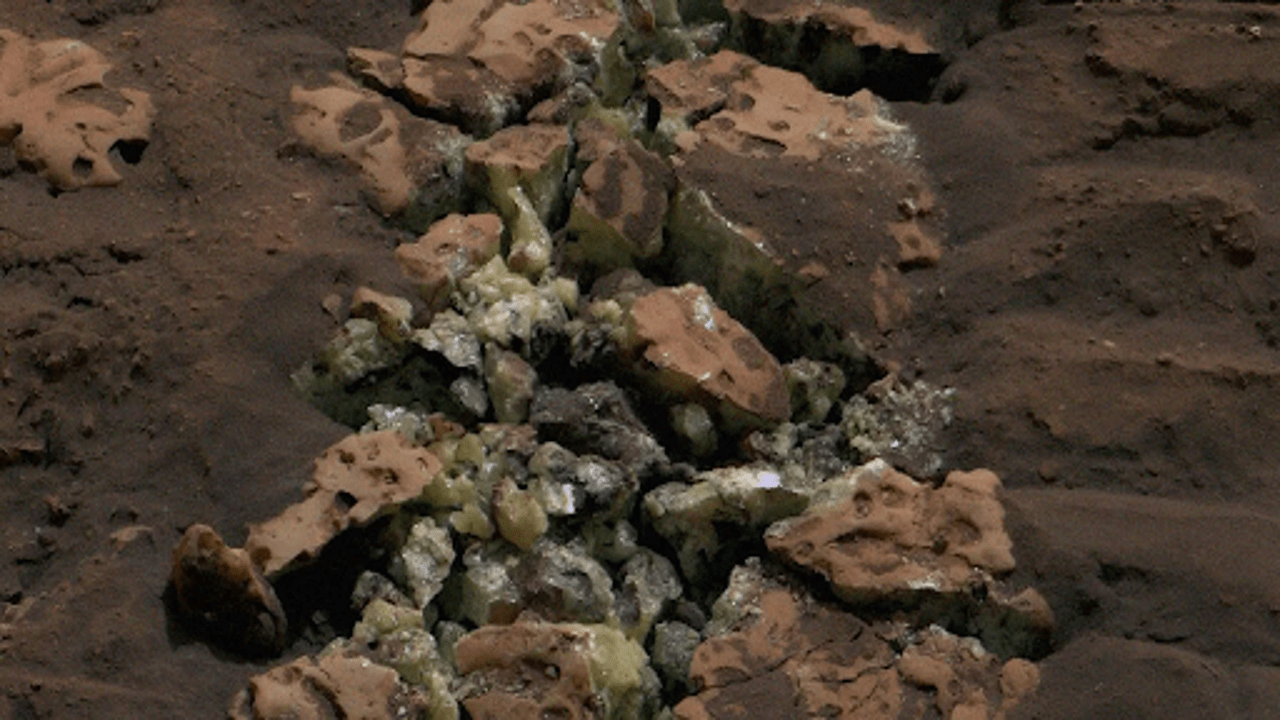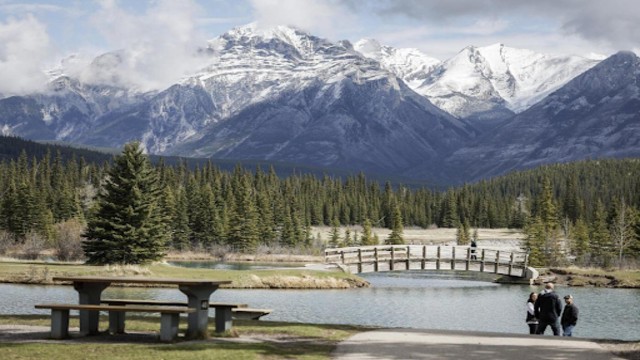
NASA's Curiosity rover broke open a rock on Mars, uncovering a stunning collection of yellow crystals. (Yahoo)
NASA’s Curiosity rover on Mars recently made an unexpected discovery while exploring a region rich in sulphates. As the rover roamed through the area, it accidentally crushed a rock, revealing a stunning array of bright yellow crystals. This find is particularly exciting because it’s the first time Curiosity has encountered pure, elemental sulphur in this region, contrasting with the sulphur-based minerals previously found.
Curiosity’s mission has been focused on exploring Mount Sharp, a massive peak inside the Gale Crater. This peak is believed to have been shaped by ancient water flows and debris. The rover has been investigating Gediz Vallis, a valley that runs down from Mount Sharp, looking for clues about Mars’ past.
The discovery was made during one of Curiosity’s off-road ventures in this valley. Scientists were astonished to find that the rock, which had been thought to contain only sulphate minerals, was instead filled with pure sulphur. This discovery is likened to finding an oasis in the desert, according to Ashwin Vasavada, the project scientist for Curiosity. He explained that such a find is unusual and requires further investigation to understand why pure sulphur is present where it wasn’t expected.
The area where Curiosity made the discovery is known for being a site of significant geological activity. The valley’s formation is believed to be the result of ancient floods and landslides, leaving behind a complex landscape of debris. Becky Williams, a scientist with the Planetary Science Institute, noted that Mars experienced a great deal of activity during this time, including energetic floods and flows rich in boulders.
While the newly discovered sulphur crystals are too small for Curiosity’s robotic arm to drill into, the rover has already identified its next target: a large boulder named "Mammoth Lakes." This boulder could hold more clues about the sulphur discovery and the history of the region.
The discovery of pure sulphur on Mars provides a new and intriguing puzzle for scientists to solve. It challenges existing theories about the planet’s geology and chemical composition, adding to the excitement of planetary exploration. Finding such unusual and unexpected materials helps researchers gain a better understanding of Mars’ past environment and the processes that have shaped its surface.















